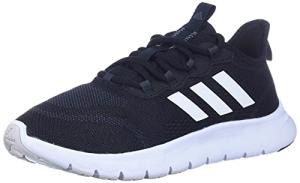Introduction:
Starting a running club can be an exciting way to connect with others who share a passion for fitness and community.
By establishing clear goals and creating a welcoming environment, anyone can successfully lead a running group that motivates its members to achieve their personal fitness goals.
This guide will outline essential steps to help anyone launch and maintain a successful running club, whether it's focused on recreational running or training for races.

As people come together to run, they build friendships and support each other on their journeys. This article will cover the important elements of creating a strong foundation for a running club, including structuring the group, promoting membership, and organizing events that enhance the overall running experience.
Readers will learn how to craft a vision that resonates with potential members and fosters a collaborative atmosphere.
A well-planned running club not only focuses on fitness but also builds a sense of belonging within the community.
By engaging with others and sharing the joy of running, members can inspire each other to stay committed to their goals, making the experience rewarding and enjoyable for everyone involved.
Key Takeaways
- Define the club’s vision to attract like-minded individuals.
- Promote the club effectively to grow membership and engagement.
- Organize events that strengthen community ties and enhance the running experience.
Formulating the Vision and Goals

Creating a strong vision and clear goals is essential for a running club. This foundation guides decisions and helps attract members.
A well-defined mission shapes the club’s direction, while core values establish its identity and culture.
Defining Your Club's Mission and Objectives
The mission statement outlines what the club aims to achieve. It should reflect the club’s purpose, such as promoting fitness, encouraging camaraderie, or training for races.
Some common goals for running clubs include:
- Increasing physical fitness: Encouraging members to set and reach personal fitness goals.
- Fostering community: Building a supportive environment where members can connect.
- Organizing events: Running regular practices and races to maintain engagement.
A clear mission motivates members. It gives meaning to club activities and creates a shared focus.
Identifying the Club's Core Values
Core values define the culture of the running club. They should resonate with what members find important.
For example, inclusivity may be a key value, ensuring everyone feels welcome regardless of skill level.
Other important values could include:
- Camaraderie: Encouraging friendships and support among members.
- Growth: Fostering personal and collective improvement in running skills.
- Health: Promoting a balanced, healthy lifestyle.
These values can shape club policies and member interactions. Strong core values enhance the club’s reputation and solidify commitment.
Structuring Your Running Club

Creating a strong structure for a running club is important for its growth and success. This involves setting up a clear hierarchy and outlining rules that guide members' behavior and engagement.
Designing the Club Hierarchy
A well-defined club hierarchy helps clarify roles and responsibilities among members. It typically includes positions such as:
- President: Leads meetings and represents the club.
- Vice President: Assists the president and takes over in their absence.
- Treasurer: Manages finances and budgets.
- Secretary: Keeps records and handles communication.
Establishing a leadership team ensures that diverse tasks are handled efficiently.
Assigning specific roles helps in organizing events and making decisions quickly. Members can also take on roles based on their strengths, fostering a sense of ownership and investment in the club's activities.
Establishing Club Rules and Guidelines
Setting clear rules and guidelines is essential for maintaining a positive club environment. These rules should cover:
- Meeting Etiquette: Encourage punctuality and respect during gatherings.
- Participation Requirements: Define expectations for attending runs or events.
- Conflict Resolution: Outline how disagreements will be addressed.
Having written guidelines helps members know what is expected of them.
It also builds a supportive atmosphere, encouraging members to voice concerns or suggestions.
Regularly reviewing and updating these guidelines ensures they remain relevant and effective.
Membership Management

Managing membership effectively is vital for a running club's success. This involves recruiting potential members and ensuring they remain engaged and connected with the community.
Recruiting Members
To recruit members, a club should create a strong and inviting presence. This can begin with a clear and catchy name that reflects the group's spirit.
Tips for recruiting:
- Promote on social media: Use platforms like Facebook and Instagram to reach a wider audience.
- Host events: Organize fun, open events like group runs or community races to attract like-minded individuals.
- Create flyers: Distribute flyers in local gyms, parks, and community centers.
Providing information on the club’s activities and benefits will help draw in potential members looking for a supportive community.
Retaining Members Through Engagement
Engagement is key to keeping members. Once people join, they should feel like part of a family.
Strategies for engagement:
- Regular communication: Send newsletters or updates about upcoming runs and events.
- Social events: Organize social gatherings such as picnics or movie nights to build relationships.
- Running challenges: Host friendly competitions or challenges to motivate members.
When individuals feel valued, they are more likely to stay active in the club.
A supportive atmosphere encourages retention and growth.
Marketing and Promotion

Effective marketing and promotion are crucial for building a strong running club. It helps attract new members and keeps the community engaged.
Key strategies include leveraging social media platforms and organizing club activities and events to boost visibility and participation.
Creating a Social Media Strategy
A solid social media strategy can enhance a running club’s visibility. Start by choosing the right platforms, such as Facebook, Instagram, and Twitter, for reaching potential members.
Steps to Create a Strategy:
- Set Clear Goals: Decide what the club wants to achieve.
- Select Content Types: Use a mix of photos, videos, and member spotlights.
- Engagement: Respond to comments and messages promptly.
- Consistency: Post regularly to keep members informed and engaged.
Utilize hashtags related to running and the local community to expand reach.
Encourage members to share their running experiences, boosting the club’s social media presence.
Promoting Club Activities and Events
Promoting club activities and events is essential for attracting new members. Begin by creating a promotional calendar that outlines key dates for races, training sessions, and social events.
Effective Promotion Techniques:
- Flyers: Design eye-catching flyers to display at local gyms and community centers.
- Social Media Events: Create event pages on social media to share details and attract attendees.
- Word of Mouth: Encourage current members to invite friends and share their experiences.
Hosting races is an effective way to gain visibility.
Promote these events through local news and running groups. This not only showcases the club but also helps foster a sense of community among runners.
Event Planning and Management
Effective event planning and management are key to a successful running club. From organizing group runs to participating in local races and celebrating milestones, well-executed events foster community and encourage participation.
Organizing Group Runs and Training
Planning regular group runs is essential for building a sense of community. They should be scheduled weekly, allowing members to prepare for various distances such as 5Ks or marathons.
Key steps include:
- Choosing locations: Select safe and scenic routes.
- Setting paces: Offer different pace groups to accommodate all skill levels.
- Promoting runs: Use social media and flyers to inform members.
Regular training sessions keep club members motivated and engaged. Providing guidance on proper techniques can enhance their skills and confidence.
Coordinating Race Participation
Participating in local races strengthens the club’s identity and camaraderie.
Choose a few key races each season, such as local 5Ks, half-marathons, or marathons, and make a club event out of them.
Tips for coordination:
- Group registration: Organize bulk registration to simplify the process.
- Carpool plans: Arrange transportation to the events.
- Team uniforms: Encourage members to wear matching gear, boosting club visibility.
Discuss training schedules leading up to the races, focusing on shared goals to build excitement.
Hosting Social Gatherings and Celebrations
Social gatherings play a vital role in creating bonds among members.
Plan events to celebrate milestones such as race finishes, personal bests, and anniversaries of the club’s founding.
Types of gatherings include:
- Post-race parties: Celebrate achievements with snacks and drinks.
- Monthly meet-ups: Use casual settings to foster friendships.
- Workshops and seminars: Host events focused on running techniques or nutrition.
Encouraging personal connections within the group will enhance the overall experience for all members.
Balancing training and social activities contributes to a supportive atmosphere.
Enhancing the Running Experience
To create a fulfilling running club experience, it is vital to focus on route variety, professional guidance, and safety measures.
These elements not only improve individual performance but also foster camaraderie among members.
Selecting Varied Running Routes
Choosing diverse running routes is essential for engaging club members. It offers runners different challenges and scenery, which can keep motivation high.
Suggestions for selecting routes:
- Natural Trails: Incorporate paths through parks or nature reserves.
- Urban Runs: Explore city streets or waterfronts for a change of scenery.
- Hill Training: Select routes with elevation changes to build strength.
Make sure to consider the skill levels of members.
Beginners may prefer flat, well-marked trails, while experienced runners may enjoy challenging terrains.
Regularly changing routes can also help prevent injuries by varying impacts on different muscles.
Offering Coaching and Training Plans
Providing coaching and structured training plans can significantly boost members' skills and confidence. A knowledgeable coach can tailor programs to meet various fitness levels and goals.
Key elements to include:
- Beginner Programs: Focus on building endurance with gradual distance increases.
- Advanced Training: Implement speed work and interval training for experienced runners.
- Personalized Plans: Encourage runners to set personal goals, whether for fitness or race preparation.
Regular workshops on techniques and form can also enhance participants' running efficiency. Consistent feedback helps members stay motivated and committed.
Implementing Safety Measures
Safety should be a top priority in every running club. Implementing specific protocols ensures that all members can run comfortably and confidently.
Consider the following safety measures:
- Group Running: Encourage running in pairs or groups, especially during early morning or evening runs.
- Emergency Procedures: Establish clear guidelines for injuries or health issues during runs.
- Visible Gear: Recommend wearing bright clothing or reflective gear to enhance visibility.
Educating members about hydration and proper warm-up can help prevent injuries. Regular safety briefings can keep everyone informed and ready for challenges on the road or trail.
Building Collaboration and Support
Creating a strong foundation for a running club relies on collaboration and support among members. This section highlights how to foster camaraderie, work with other running groups, and seek sponsorships to enhance the club's experience.
Fostering Camaraderie and Friendships
Building a friendly atmosphere in a running club is essential. Organize social events, like group runs followed by meals or coffee gatherings. These activities encourage members to interact and build friendships.
Tips to foster camaraderie:
- Schedule regular social runs.
- Host themed events, such as costume runs.
- Create small running teams to add a personal touch.
When members feel connected, they are more likely to stay engaged and motivated. Strong friendships can help members push each other to reach their running goals.
Collaborating with Other Running Groups
Partnering with existing running groups can bring benefits to a new club. Collaborations provide access to more resources and attract new members.
Ways to collaborate:
- Join forces for events or races.
- Share training tips, routes, or experiences.
- Promote each other’s activities on social media.
Co-hosting events not only increases visibility but also enhances the overall experience for all participants. By working together, clubs can tap into a broader community and bring in diverse perspectives.
Seeking Sponsorships and Partnerships
Sponsorships can provide financial support and resources for a running club. To attract sponsors, clubs must demonstrate value and community involvement.
Steps to secure sponsorships:
- Identify potential sponsors, like local fitness stores, and gyms.
- Create a sponsorship proposal outlining benefits for the sponsor.
- Highlight club activities, community engagement, and member demographics.
Building partnerships can also lead to benefits like discounts for members or access to venues for events. Connecting with sponsors not only boosts club resources but can enhance member experiences significantly.
Logistics and Administration
Effective logistics and administration are vital for a successful running club. Key areas include choosing a memorable name and logo, setting meeting times and locations, and managing finances. Each of these aspects contributes to the club’s identity and smooth operation.
Choosing a Name and Logo
Selecting a club name is the first step. The name should be easy to remember and reflect the club's goals. A strong name can attract new members.
Next, create a distinctive logo that embodies the club's spirit. This can involve:
- Design software like Canva or Adobe Illustrator for professional-looking graphics.
- Keeping the logo simple so it's recognizable at various sizes.
- Using colors that represent energy, such as blue or orange.
A unique name and logo help build a strong brand identity.
Setting Meeting Times and Locations
Regular meetings are crucial for member participation. Clubs should choose consistent meeting times that accommodate most members. Weekends or weekday evenings are often popular choices.
Location matters too. Members prefer safe and accessible areas. Consider these factors:
- Well-lit streets for evening runs.
- Availability of parking and public transport.
- Different routing, such as loops and out-and-backs to keep the experience engaging.
By planning thoughtfully, the club can ensure maximum attendance and enjoyment.
Managing Finances and Club Resources
Financial management is essential for sustaining the club. Start with a clear budget, which includes:
- Membership fees to cover costs like events or gear.
- Fundraising activities that can support community events or local races.
Consider setting up a bank account in the club’s name for transparency. Keeping track of expenses and income gives members a sense of accountability.
Using tools like spreadsheets can simplify tracking finances. Regular financial updates during meetings keep members informed and involved.
Frequently Asked Questions
Starting a running club can raise many questions. Here are some answers to common inquiries about establishing and managing a successful running group.
How can I start a running club at my workplace?
To start a running club at work, first gauge interest among colleagues. Organize a casual meeting to discuss ideas and gather feedback. Choose a regular meeting time that works for most people and determine a walking or running route. Encourage participation through company communication channels or flyers.
What are the necessary steps to establish a running club at an elementary school?
To create a running club at an elementary school, obtain permission from school administration. Recruit volunteers, such as teachers or parents, to help lead the club. Schedule practice sessions during recess or after school, and promote the club through school newsletters and events to encourage student participation.
How does one go about registering a new running club?
To register a running club, check if your state or country requires formal registration. Some areas may require filing paperwork for nonprofit status or liability insurance. It’s also beneficial to create a constitution outlining the club's rules and structure. Seek guidance from local running organizations during the process.
What are some creative name suggestions for a running club?
Names can reflect a theme or a location. Some suggestions include "Running Rebels," "Neighborhood Pacers," or "Fast Feet Crew." Consider incorporating local landmarks or unique features of your area. Brainstorm with club members to find a name everyone feels connected to.
Is it possible to generate income from managing a run club?
Yes, a running club can generate income through membership fees, local sponsorships, or fundraising events. Offering merchandise like T-shirts or gear can also create revenue. Organizing races or fun runs helps in building the community and raising funds while increasing visibility for the club.
What are effective strategies to promote and market a running club?
Effective promotion starts with creating an engaging social media presence.
Use platforms like Facebook or Instagram to share updates and highlight events.
Design eye-catching flyers and post them in community centers or local businesses.
Partnering with nearby running stores can also help in promoting the club to a wider audience.







